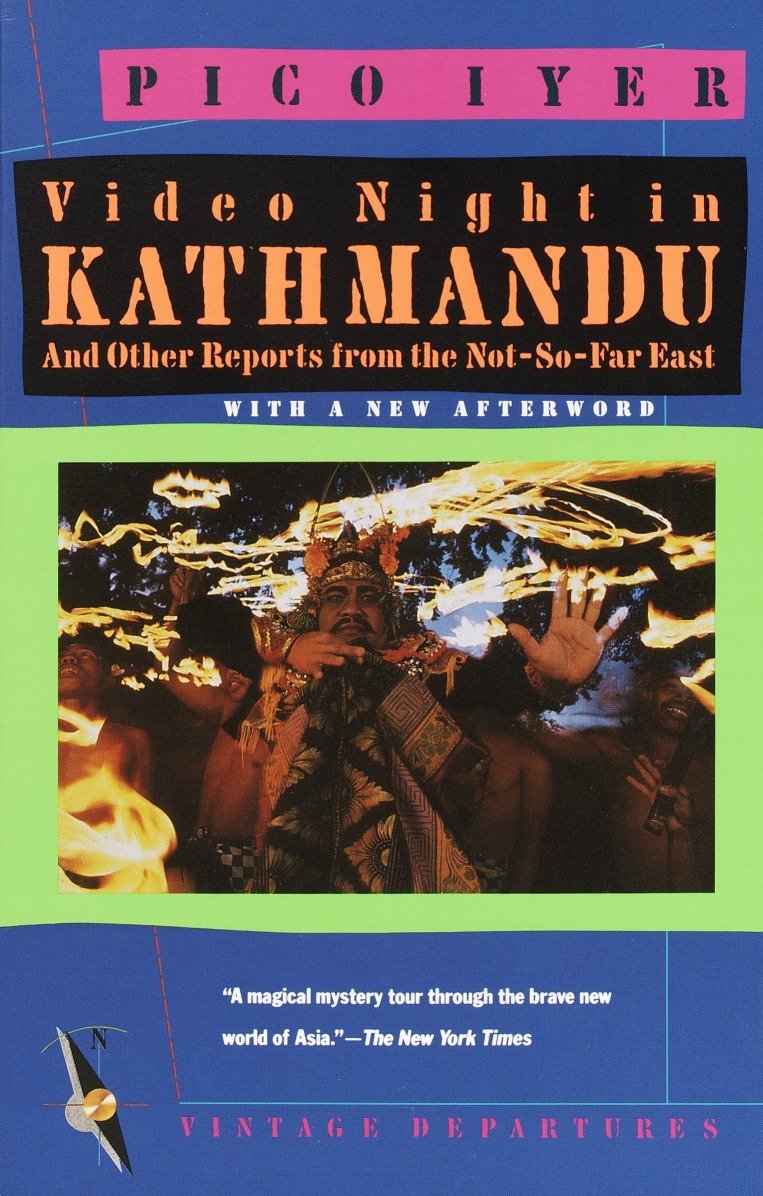Pico Iyer, Video Night in Kathmandu: And Other Reports from the Not-So-Far East (1988)
On a rooftop in Kathmandu in 1997, I watched Trainspotting with a bunch of other tourists, and I remember thinking, during the infamous scene about the worst toilet in Scotland, that it actually looked pretty posh, what with its porcelain basin and all. I’d just come back from a couple of weeks in the mountains, and I’d seen far worse.
I’d always thought Video Night was about these tourist showings, and that the book was another Karma Cola, another Indian’s perspective on the marauding Western tourists. But Iyer is Californian, not Indian (though his parents are from India), and Video Night is a kind of mirror image of Karma Cola: a look at how Asia and Asians are being changed by the globalized economy that was just beginning to emerge in the 1980s.
Iyer breaks his book into chapters by locale — Bali, Tibet, Nepal, China, the Philippines, Burma, Hong Kong, India, Thailand, Japan — and for each he delves into a particular theme, drawing from it a kind of insight about that particular nation. It’s a risky business, but Iyer’s insights are so sharp, and his turn of phrase so skillful, that he carries it off. For all the places I visited in the years or decades after Iyer, he seems to have captured an essence that resonated powerfully with my own experience. (The one significant exception is China, which by the time I visited in 2009 and 20014 had transformed itself from a land of cement buildings, gawping old folks, carless boulevards, and empty plazas into a teeming capitalist madhouse.)
More than any other book I’ve read so far, Video Night seems like what I’d like to write. Indeed, reading Video Night as prep for my own book sometimes felt like getting out your guitar and ProTools and then listening to the White Album for inspiration. What even is the point? But my story is its own thing, I suppose, and happened in a different time, and I’ll tell it.
What’s most useful to me from Iyer is the structure. A lot of itinerary-driven travel writing falls into the same meandering difficulty as the travelers themselves who start to wonder why they’re slogging on to the next ruin in the guidebook. Even when it’s done very well, as in Robert Byron’s Road to Oxiana, it can come to seem a little flacid and pointless. Iyer escapes this difficulty by writing thematically rather than chronologically. Some of the essays are more narrowly pitched than others — Thailand is about love for sale, India is about Bollywood, Japan is about baseball — but even the more diffuse pieces have a sort of a thesis behind them, which gives the narrative force and purpose. You feel like each essay has something specific to say. There’s a reason you’re being asked to come along.
While I don’t imagine restructuring my narrative quite so much — the chronological quality seems more important in what is, in part, a bildungsroman — I can see how I might organize the journey into chunks, each with a kind of theme or focus. I won’t give too much away for now, but I’m grateful to Iyer for reminding me of my own essayistic strengths. My best writing has been travel writing, and the best of that was written on specific themes. Maybe that’s the way to go.

